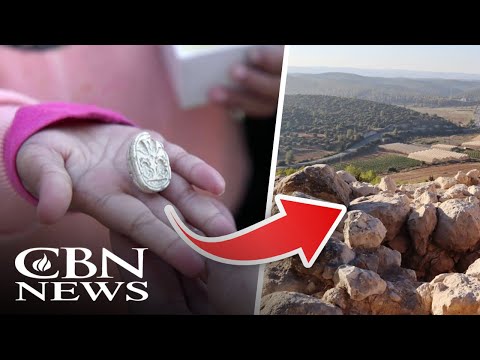In a remarkable discovery that intertwines faith, history, and archaeology, a three-year-old Israeli toddler recently found an ancient Egyptian artifact in Azeka, a site linked to biblical history. This tiny yet significant seal, known as a “scarab,” is nearly 3,800 years old and speaks volumes about the culture and historical context of the Holy Land long before the Israelites entered the region. The find not only ignites excitement among archaeologists and historians but also serves as a profound reminder of the faith that is central to the evangelical community.
Azeka, mentioned in the biblical account of David and Goliath, is an ancient city that lies on an essential route between the coastal plains and the hills of Judea. This area has seen numerous civilizations rise and fall, with each one leaving its mark. The Egyptian influence over this land is crucial, as it provides context for understanding the biblical narratives that evangelicals hold dear. The culture of the Egyptians greatly influenced the region, which was a strategic crossroad known for its importance in ancient times.
The seal’s significance lies not only in its age but also in what it represents. In Egyptian culture, the scarab symbolized new life. Such artifacts are essential in illustrating the deep connections between ancient civilizations and the unfolding story of God’s people. The discovery emphasizes the importance of understanding the land’s history, which is rich with divine significance. This small artifact serves as a tangible link to the events described in the Scriptures and brings biblical history to life in a unique way.
For many evangelicals, discoveries like this provide a sense of reassurance and validation of their faith. As archaeologists continue to uncover artifacts that align with biblical accounts, adherents of Christianity are strengthened in their belief that the Bible is not merely a book of stories but a historical document that offers divine truths. The storytelling tradition within the Bible is enriched by archaeological finds, including this seal, which echoes the narrative of God’s promise to Abraham and his descendants.
Moreover, the ongoing excavations at Azeka and surrounding areas reveal the intricate tapestry of life in ancient Israel. The findings often corroborate events described in the Bible, presenting a continuous narrative that resonates with the principles of faith and morality cherished by the evangelical community. The evidence from the past reaffirms the belief in a God who orchestrates history and highlights the significance of the land of Israel in His divine plan.
As we contemplate this incredible discovery, it serves as a reminder of the spiritual connection that many feel to the geography and history of the Holy Land. Each artifact uncovered not only tells a story of human civilization but also reflects the broader story of God’s interaction with His people throughout time. This discovery thus inspires the evangelical community to delve deeper into the historical context of their faith, strengthening their understanding of the Scriptures and encouraging them to live out the principles that have been handed down through generations.



